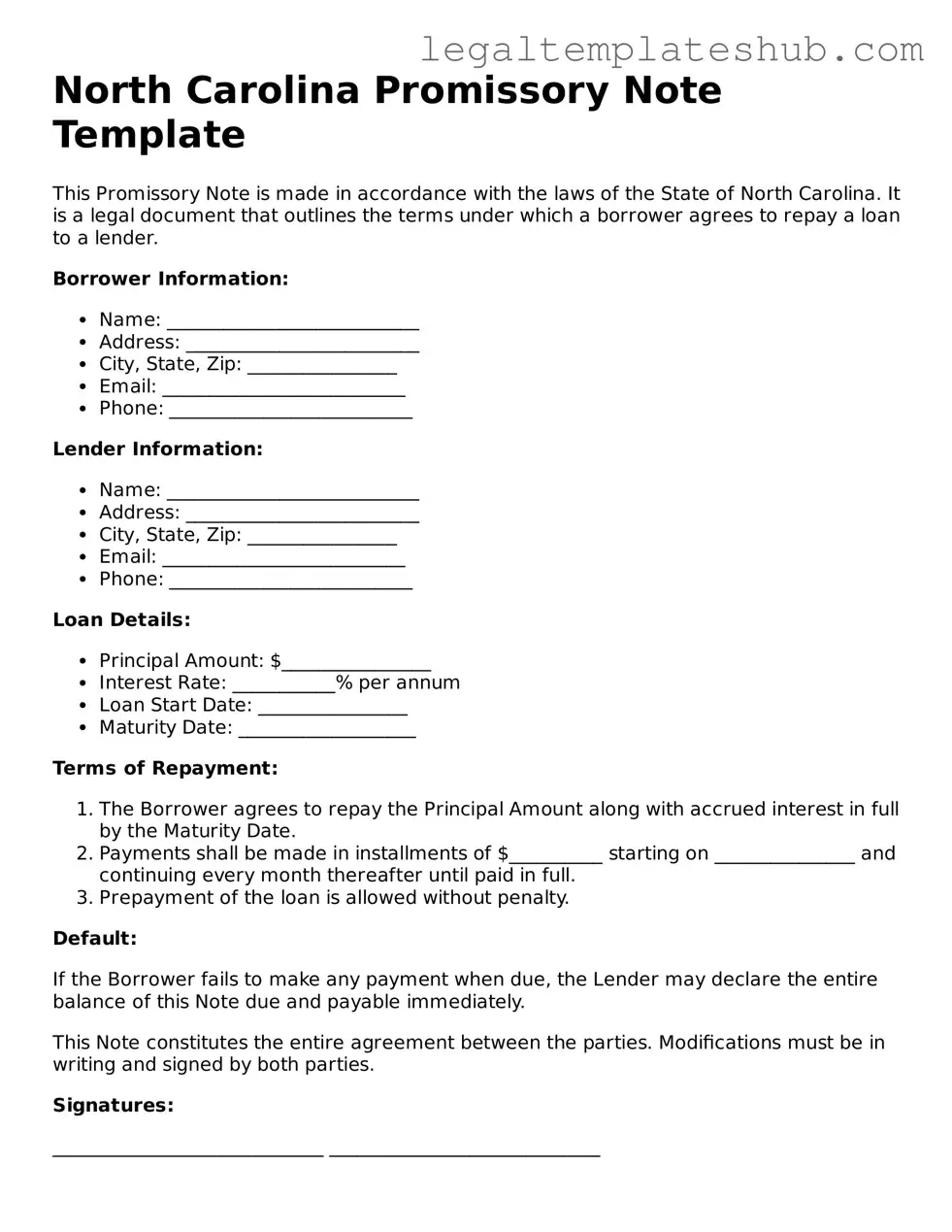Printable Promissory Note Document for North Carolina
A North Carolina Promissory Note is a written promise to pay a specified amount of money to a lender at a designated time. This legal document outlines the terms of the loan, including interest rates and repayment schedules. Understanding this form is essential for both borrowers and lenders to ensure a clear agreement and to protect their rights.
Ready to create your own Promissory Note? Fill out the form by clicking the button below.
Access Editor
